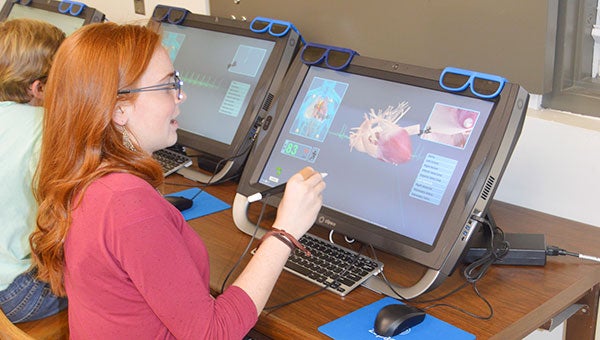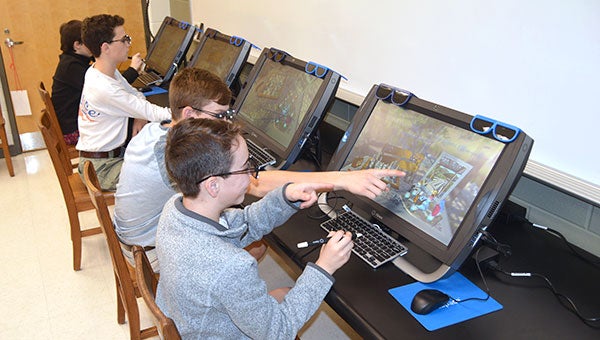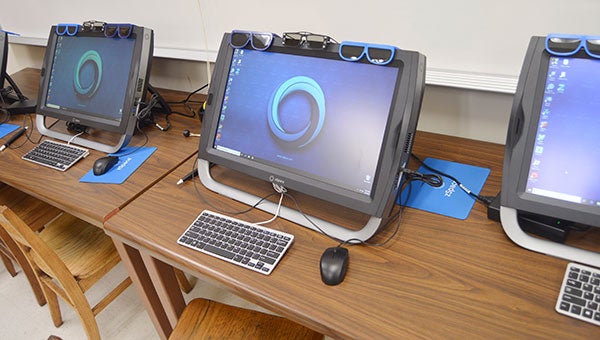REALLY HIGH TECH
Published 11:20 am Thursday, February 7, 2019
New computer labs use virtual, augmented reality for teaching
Students in Andalusia City Schools are getting their hands on new technology that facilitates hands-on learning.
The system this year added computers that offer lessons using virtual reality and augmented reality. zSpace allows people to interact with simulated objects in virtual environments as if they are real. Each computer has 3D glasses, and a stylus with which students can move the images on a screen and through which they can feel motion, like the beating of a heart.
Superintendent Ted Watson said he first learned about zSpace products from a brochure.
“I went to Gary Odom our technology coordinator,” Watson said. “My first thought was that I wanted to get this in the hands of our high school science teachers.”
Students are able to use the zSpace computer to navigate several subjects including human anatomy, which is why Watson wanted the high school science teachers to have the equipment.
“I asked the question about bypass surgeries because I don’t know too much about it and then it was like I got to pull the heart out of somebody’s chest and have it there in front of me,” Watson said. “I mean, it was in virtual 3D, live, beating motion, and being able to have that in our school system would be second to none.”
Watson said that he knew the equipment existed, but didn’t know that he would be able to get it for the local system.
“We began to look at trying to implement some STEM activities into our schools,” Watson said. “This zSpace technology is not brand new to the market, because the military has had it for a couple of decades. What it amounts to is virtual training. It is similar to the virtual training that pilots and tank operators use when they are training for battle. The technology has made it into the mainstream and that is where we are.”
There are now 45 virtual reality computers overall, 15 in each of the schools in the system.
“It does all kinds of fun things so every school in our system can benefit from it,” Watson said. “You get into anatomy, biology, history, there’s a program where you can design houses, and welding. For the elementary students, there are hands-on programs for math, reading and all of the core subjects. This is something that we can put in the hands of the students and make learning literally a hands on adventure.”
Watson has the idea that one day the school system can partner with local businesses and provide a training outlet for students that want to stay and work locally.
“What I would really like to happen is for us to get far enough along to where we could request different programs for us that would be specific to our job market in Andalusia,” Watson said. “For example, I would love to see a program with lineman skills or a program where Shaw could incorporate how to use their machines. I would love to open it up to our local businesses.”
Watson said that education is an ever-changing process.
“People tell us that the jobs of tomorrow that our kids in elementary school are going to have one day, we don’t even know what they could be yet,” Watson said. “We are just trying to prepare our kids to be thinkers, to maximize their understanding, to let prepare them to be kids that go out there and be inquisitive about life in general. We hope to be able to give them a little bit of an advantage when they go to college, and that they’ve been exposed in an environment that gives them a leg up on other school systems.”
He said that now is the time to move forward with the times.
“This is just one example of our technology,” Watson said. “I’m not interested in moving to a situation where we send a kid home with their own computer, because that causes problems in itself, we just want to make sure that everybody has a tool that they can use at school.”
When Watson requested the computers prior to the current school year, he estimated the four labs would cost $212,000.







